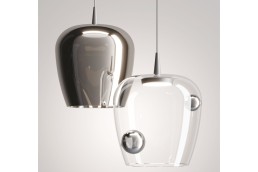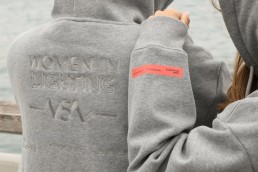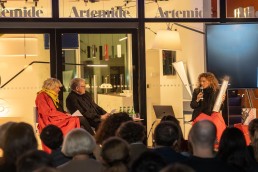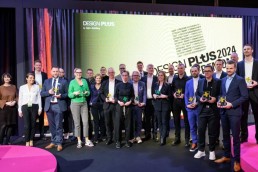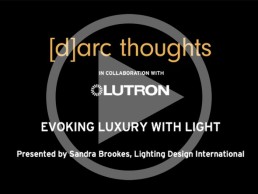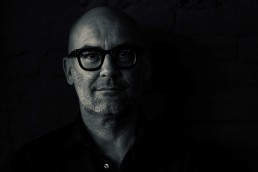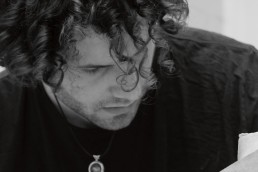Jeffrey Beers 1956-2024
(USA) – Jeffrey Beers, founder of JBI, dies age 67 after a battle with bowel cancer.
A leading figure in hospitality design, Jeffrey Beers, passed away on the 18 March 2024, surrounded by his wife, Connie, and his two sons Justin and Oliver.
Beers began his studio in 1986 and established a successful career spanning 38 years designing for celebrities, corporate America, and international hotels. Significant projects include the likes of Fontainebleau hotel in Las Vegas, the offices for Jay-Z’s Roc Nation record label and 40/40 Club in Manhattan and the legendary China Grill,
Newly appointed partners, Tim Rooney, Nora Liu-Kanter, and Michael Pandolfi says “During this difficult time, our priority remains supporting Beer’s family and the JBI team as we navigate this loss. We ask for your understanding and patience, and privacy as we work through this period of grief and transition.”
Zafferano - Bilia
(Germany) – Zafferano launches new suspensions lamps for decorative market.
Characterised by neutral colours and synthetic minimalist lines, the Baby indoor suspension light fixtures are easy to integrate into various environments, the lights come complete with dimmable LED source and are available in two colour temperatures.
When combined with borosilicate glass diffusers, the Baby models become decorative suspensions, named Bilia and designed by Nava + Arosio. These models are distinguished by the skillful combination of aluminum and glass, by the elegant selection of colours and finishes; and by the possibility of arranging the lamps into large suspended modular compositions, which create interesting visual and lighting effects.
Women In Lighting celebrate 5th anniversary
(Germany) – Women in Lighting (WIL) celebrated its 5th anniversary at Light and Building, Frankfurt.
Celebrated annually on International Women’s Day, the organisation drew a crowd of supporters at the Messe Frankfurt in March, where Founders Sharon Stammers and Martin Lupton hosted a morning of celebratory content and networking event.
Created to spotlight women who are largely underrepresented in the industry and champion their achievements, while also highlighting challenges that they face, the platform has to date connected designers from across 79 countries. Its expanding network foster’s support among both emerging and established professionals.
Commencing the event was an exploration of “Inspirational Women”. Six industry experts, three men and three women: Carla Wilkins, Lichtvision; Cherine Saroufim, WIL Lebanon Ambassador; Andrea Hartranft, Hartranft Lighting; Philip Rafael, Insight Lighting Design; Amardeep Dugar, Lighting RN-D; Tejas Doshi, Light & Beyond, in a Pecha Kucha style presentation served alongside refreshments.
This line-up was followed with keynote speakers. Jen Lewin, installation artist, discussed interactive landscapes and the power of interactive light art. Followed by Lighting designer Ulrike Brandi reflecting on her 35-year career journey as a seasoned light designer, author, and international teacher. Multimedia director Julie Boniche concluded the keynote sessions with a discussion on lighting in the entertainment industry and how lighting orchestrates emotions. A mixture of short remote and in person discussions with five international ambassadors of WIL followed, before finishing with a networking party.

Originally created for architectural lighting design, WIL has grown to include light engineers, artists, those in education and entertainment. In making these connections women share knowledge and have sourced inspiration from each other.
The first WIL event, conducted virtually, took place during Covid in 2019, and ran again in 2022. In 2023 a global gathering of data was conducted examining the lighting profession in the context of the 2023 theme of International Women’s Day, embracing equity. The data gathered was discussed at the event and looked to uncover where equity was thriving and where it needed to improve.
800 people from 73 countries completed the survey, which was designed for both men and women to participate, although only 30.9% were men. The results found both positive and negative results. Positives included policies being implemented in workplaces for gender equity however a high percentage of people reported sexism and racism in the workplace.
Sharon Stammer, co-founder of WIL, says: “We are often asked, what’s the point of WIL? Or I don’t get it or isn’t it time to stop going on about women or if its divisive. We disagree. Our digital platform is celebratory. The aims of the project have always been to try to do something that is primarily positive – we didn’t want to create a forum for negativity and felt that the best thing we could do was showcase the amazing work of women working in lighting from around the world.”
Stammer adds: “The journey towards equality and diversity in lighting design is ongoing, and the Women in Lighting Project plays a crucial role in steering this journey forward. As we move ahead, we commit to uplifting, and amplifying the voices of women in our industry, recognising their invaluable contributions and potential to shape the future of lighting designs.”
Katia Kolovea, communication strategist for WIL, says: “Reflecting on the exciting five-year WIL anniversary event in Frankfurt, I would love to celebrate each participant, male or female, from various industry sectors and career stages who came together to participate. As the talks ended, we gathered on stage, inviting everyone to bring their physical or digital flags, creating the most colourful and multicultural photo the Women in Lighting Network has ever seen. Seeing those photos now, tears of joy fill my eyes, feeling the global energy and support this movement has ignited.”
Artemide hosts showroom party for product launch
(Germany) – New fixture Criosfera launches in Frankfurt.
Taking place in its flagship store in Frankfurt as part of Light + Building fringe events, Criosfera was unveiled to guests by Carlotta de Bevilaqua, CEO of Artemide, alongside designer Giulia Foscari, Founder of Una/ Unless studio. The launch was followed by a cocktail party and dinner.
The inspiration for the fixture - the cryosphere, encompasses all components of the earth system that are frozen; 90% of such ice is in Antarctica. That same ice is the largest repository of data on our climate history, enabling scientists to trace the climatic history of our planet, extracting from captive air bubbles, trends of CO2, greenhouse gasses, and temperature, from past glacial and interglacial eras. The marker for climate change is thus the Ice Core – a cylinder of stratified ice, extracted from the depths of our planet’s ice sheets.
The ‘ice core’ of the Criosfera light fixture, consists of a layering of blown recycled glass with an optic core to mimic the refractive nature of the ice surface and maximise the diffusion of light, evoking the stratification of the polar ice.
The external blown glass cylinder is the structure inside, which the optoelectronic engine disappears without visible shadows. Engravings are impressed into the hot glass before blowing to make its thickness wavy and irregular.
The core fits into three different essential structures shaped like the scientific instruments used to extract and analyse ice cores. They are composed of surfaces made with laser cutting, a technology that optimises the use of materials.
Foscari is architect, curator, activist, and a board member of the Antarctic Southern Ocean Coalition (ASOC). Based in Venice, Italy, UNA is an architecture office focussed on cultural projects whilst UNLESS is a non-profit agency for transnational research on Global Commons. Foscari is also a board member of the Antarctic Southern Ocean Coalition (ASOC).
Foscari said: “Criosfera is not ‘just’ a light. It is a resolution, a manifesto of our times. One that is imbued with optimism that we will individually and collectively, defend intergenerational justice.”
Design Plus Awards winners announced at Light + Building
(Germany) – Eleven brands were awarded the DesignPlus award during Light + Building’s opening day, at the show’s Design Plaza.
33 nominees were selected from 100 submissions, from which the winners were chosen. Both the nominated and the winning products were displayed in an exclusive exhibition in the foyer of Hall 5.1 for the entire duration of Light + Building.
Applicants submitted their solution in on one of three categories: Light + Creation PLUS, Sustainability + Efficiency PLUS, Smart + Connectivity PLUS. There was also a Sustainable Exhibition Stand category.
Light + Creation winners included: IXA Floor by Artemide, °plug by Eden Design, Munda Textile Lichtsysteme by Munda Textile Lichtsysteme, Junistar Bio by SG leuchten/ SG Armaturen AS, NS by Smarttech Group.
Winning lighting solutions across the two other categories included Blu2Light LED Treiber für Batteriesysteme und Solarleuchten, and Hecker EnergyVision Genll in the Sustainbility + Efficiency PLUS category, and Buscg art linear/ ALBA by Busch-Jaegar Elecktro in Smart + Creativity PLUS category.
Zumbotbel Group, Midgard Licht, Sattler Leachten, Inotec Sicherheitstechnik and Schneider Electric were acknowledged in the Sustainable Exhibition Stand category – introduced this year as part of Frankfurt Messe’s responsibility in supporting sustainable events.
www.light-building.com/designplus
Record attendance for Workspace Design Show
(UK) – Workspace Design Show the trade show for workplace specification, saw more than 4,500 professionals attend for its return in February.
Held over two days in the Business Design Centre London, visitors from more than 40 countries attended, the show totalling more than 500 products and brands from more than 20 countries.
2024 included an array of features inspired by the theme of – ‘Bloom – Exploring the Thriving Ecosystem of Work Life’. Such features were the Talks Lounge designed by Gensler, an Insights Lounge designed by BDP, and an immersive entrance designed by TP Bennett.
The talks programme was a huge success pulling in architects, designers, and professionals to hear from leading industry experts in their fields. arc magazine’s editor Matt Waring led an insightful discussion on “the new aesthetic of repair and re-use in lighting design exploring why we need a mindset shift, with an industry expert panel of speakers including: Dan Lister, Arup; Ruth Kelly Waskett, Hoare Lea; Simon Fisher, F Mark; and Kristina Allison, Atkins Global.
Watch the full talk with Matt Waring and his guest panel here.
Esha and Charlie Bark-Jones, Workspace Design Show founders, said: “We’re absolutely thrilled that so many of the UK’s workplace interiors community came together to experience the fantastic speakers sharing their insights, transformative products from our exhibitors and stunning features experiences from our partners.
Bark-Jones adds, “We are delighted to see specifiers from Asia, The Americas, The Middle East, Africa and Europe also attending to join the celebration of the future of work in London. The spirit of collaboration at the show was evident for all to see, as people formed partnerships to transform the employee experience in these disruptive times for workplaces.”
The next UK show will be held on 26 – 27 February 2025 and the Amsterdam edition of Workspace Design Show takes place on 5 – 6 November 2025.
Evoking Luxury with Lighting
In order to evoke luxury in a space the appropriate lighting design is essential to enhance the overall experience. Making reference to the xx Hotel, Sandra Brookes highlights how creating an exceptional atmosphere for guests is key to get them to stay and to entice them to come back again and again creating a continuous and successful business.
Davide Groppi opens a new Milan store
(Italy) - Davide Groppi opens a new two-level store, via Manzoni 38, in Milan.
The brand’s new store marks another milestone after New York, Seoul, Porto, Mallorca, Piacenza, Parma, Bologna, Verona. Designed with the 967arch studio, Milano Manzoni 38 spans over 200sqm and distributed over two levels.
Davide Groppi says: “In 1998 I opened my first shop in Milan, in via Medici. I was scared and excited at the same time, but I understood that Milan was important and over time I learned to love it. Today it is one of my places. The space in via Medici has changed over the years along with the company, but it is there that I have always expressed all my passion for light. Today I feel the need to find another place for my creations. And 25 years later, I find myself here, excited, in the centre of Milan, in one of its most exclusive areas, via Manzoni. The thrill of 1998 is the same, and the desire to reveal all our luminous stories, our alphabet, and our syntax is the same. Via Manzoni will be a place of meeting, representation, and seduction. Thanks to everyone: to my collaborators, to my friends, to all the people who believed in me.”
Messe Frankfurt acquires stake in LightFair
(Germany) - Light + Building brand network grows to 13 events worldwide with latest partnership.
Believed to be a 33% share, with Illuminating Engineering Society and International Association of Lighting Designers owning the rest, Messe Frankfurt will now organise the five-day trade fair alongside a conference.
With more than 500 exhibiting companies and thousands of top buyers, LightFair is the largest event for architectural and commercial lighting in North America. Focusing primarily on forward-looking innovations, an experience-oriented exhibition space, a great many new products, networking and a wide range of training opportunities, LightFair sets new standards for light design and innovative lighting technologies in the US.
Wolfgang Marzin, President, and Chief Executive Officer of Messe Frankfurt, says: “With the vast experience of our partners IALD and IES in North America and Messe Frankfurt’s track record as an organiser of leading international building technology trade fairs, we are pooling our shared strengths. This strategic decision also enables us to bring our expertise to bear in the USA.”
Constantin von Vieregge, President, and CEO of Messe Frankfurt’s US subsidiary Messe Frankfurt, says: “The signing of this agreement brings together the expertise of Messe Frankfurt – known for its successful track record in organising world-class trade events with Light + Building, the world’s leading trade fair for lighting and building technology – and the visionary approach of associations IES and IALD in the realm of commercial lighting. The synergies we share mark a significant step towards advancing the industry and promise an unparalleled platform for industry professionals, innovators, and stakeholders.”
Christopher Knowlton, Chief Executive Officer of the IALD adds: “The IALD is thrilled to partner with Messe Frankfurt for LightFair and is eager to reinvent the international trade show and conference. The partnership will amplify the event’s ability to showcase cutting-edge lighting innovations and connect directly with the lighting community in the United States and beyond. As this next evolution of LightFair opens its doors to broader audiences, the IALD welcomes the fostering of collaboration and inspiration within the lighting industry that will come from this international alliance. This new stage in LightFair’s development will open up new possibilities for reaching a larger audience. This is why IALD welcomes wholeheartedly the increased cooperation and inspiration within the lighting industry that this international alliance will bring about.
LightFair is now part of the Light + Building technology fairs around the world. The flagship fair is Light + Building, which takes place in Frankfurt am Main every two years and will open its doors between 3 and 8 March this year.
LightFair 2025 will be held in Las Vegas between 4 and 8 May.
Federico Fiermonte
The brand new, brutalist-style, sculptural light Spira was presented at 2023’s Material Matters exhibition as part of London Design Festival.
Spira’s creator, Italian Federico Fiermonte is based in Helsinki, Finland and has only been designing and creating objects, experimenting with materials, and developing skills since 2021.
It is a spiral-shaped lamp, described by Fiermonte as “elegant, dynamic and delicate”. “It plays on the contrasts between a light and dynamic shape derived from nature, with an artificial, heavy, and robust material such as concrete, all with an added decorative touch given by the internal light that runs along the slender shape”, he adds.
The spiral shape is a common thread that runs through a lot of Fiermonte’s designs, something he explains as an “unintentional” consideration in his work.
“I envision this product primarily as a collector’s item, given its deeply artisanal creative process, which ensures that each piece is distinctly unique. When placed within a space, the Spira lamp is carefully designed to blend into its surroundings, asserting its presence with elegance.
“It effectively embodies the robust nature of the material that constitutes its essence, evoking a “brutalist” aesthetic. At the same time, as a decorative object, it generates a surprising contrast when placed in a minimalist environment, lending an unexpected element while curiously maintaining a sense of harmony within the environment.
“Exploring the interplay between light and concrete, I wanted to analyse my profound fascination for the field of architecture,” he continues.
“Concrete has made it possible to realise remarkable structures throughout architectural history, ranging from the iconic Pantheon dome in Rome where I come from, to complex constructions such as the Ganter bridge in the Swiss Alps. Within the context of architecture, I have always been captivated by the potential inherent in concrete. Spira draws great inspiration from the elegant spiral staircases of high-end buildings across the world with particular care of those part of the modernist style.
“For me, the key to achieving a harmonious and cohesive environment depends on the intrinsic relationship between design aesthetics and architectural materials.
“A line that guided me in the creation of this product - and which I think is always a characteristic feature of my way of conceiving objects - is to respect precise mathematical and geometric parameters, which vary from project to project.
“Working with light fascinates me enormously through the attempt of sculpting and giving shape to something so intangible and eternal.”
The concrete used by Fiermonte is composed of recycled aggregates to aim for a more sustainable product. The concrete is cast in a 3D printed mould made up of five parts, which proved challenging to create due its complex shape. “The most significant difficulty in making this piece was the creation of a mould that could lead to a clean and optimal result and produce precise edges. Making the mould is in fact 70% of the physical production work and it’s constantly being developed as I add improvements while continuing to work on the product,” he explains.
“In the initial stages, I experimented with compact foam moulds milled with CNC technique, subsequently I experimented with a silicone mould supported by plaster, and finally reaching the best result with a 3D printed mould with PLA made up of five parts.
“The particularly simple shape is complicated to obtain by casting the concrete, especially to remove once it has solidified.
“Within the lamp’s structure lies an armature crafted from hand-bent and welded rods, sourced from reclaimed metal waste, as well as aggregates repurposed from debris of different sizes (one to four millimetres) collected in the Otaniemi area in Espoo near Helsinki within the construction industry.
“For the functioning elements of the lamp I have been using a 12V DC transformer and a thin LED COB strip light. The implementation of a COB-type LED light strip allows the individual LEDs to be very close to each creating a seamless line of light that integrates perfectly within the design based on curves and lines.”
He continues: “Crafting an interior piece in concrete, using a recipe divergent from those employed in construction or infrastructure, offers a notable advantage. In this context, there is no imperative to meet specific standards of strength or durability like most structures that are concrete made. This liberates the creative process, fostering a greater degree of flexibility and experimentation, allowing for more focus on other artistic and design aspects.
“The choice to use concrete was partly driven by my desire to challenge public perception surrounding a material that I find captivating from an aesthetic standpoint, both in an attempt to highlight the beauty that can be obtained through this material and by taking it to its extremes.
“At the same time, I aimed to contribute to a more sustainable production approach by selecting components and conscientiously repurposing other waste elements.”
Once Fiermonte had settled on the design for Spira, his primary goal was to not change or make any compromises on the shape. This greatly impacted the process of creating and developing the mould. But it was all worth it for the designer as he achieved what he set out to, and all within just over a year.
www.fiermonte.design
Charlie Bowles
As we move into 2024, Charlie Bowles, Director at Original BTC, shares his thoughts about sustainability being a continued trend in both product and lighting design. He also comments on the continued drive to making home life more comforting as we continue to spend more time there.
In the ever-evolving world of lighting design, 2023 brought forth a notable shift towards sustainability, with a particular emphasis on the use of natural materials and a reduced reliance on plastics. This ever-emerging trend, which is sure to continue to gain momentum into 2024, marks a significant stride towards eco-conscious practices within the design industry.
This increased incorporation of natural materials, replacing the use of plastics in lighting fixtures, has become more popular recently. This not only aligns with environmental concerns but also introduces a refreshing aesthetic into living spaces.
The move towards sustainability is further underscored by the sustained popularity of portable rechargeable lights. Beyond the environmental benefits of not using as much energy and lowering carbon emissions, these portable lights offer newfound flexibility and convenience, allowing users to adapt their lighting solutions to different spaces and occasions and thereby offers practical solutions for modern living. These lights provide a mobile and versatile lighting solution that adapts to various settings, reducing the need for fixed, energy-consuming fixtures.
The integration of technology and sustainability will also continue to be a notable aspect of lighting design in 2024. The choice to focus on sustainability in lighting design isn’t merely a passing fad; it represents a conscientious effort to address environmental challenges and reduce the ecological footprint of design practices. By utilising natural materials, designers contribute to the reduction of material waste, a critical concern in a world grappling with environmental degradation. This shift is not just about aesthetics; it’s about making a tangible and lasting impact on the planet.
As we move into 2024, the anticipation is that the focus on sustainability will persist, with an optimistic outlook towards products designed for longevity. A commitment to crafting designs that stand the test of time is crucial for fostering a more eco-friendly future. Rather than succumbing to fleeting trends, the emphasis is placed on creating timeless pieces that contribute to sustainability and bring enduring joy to consumers for years to come.
The intersection of sustainability and aesthetic appeal becomes even more pronounced when we consider the rising prominence of soft, earthy colours in lighting design. This trend can be attributed to the desire for a more playful and organic vibe in living spaces, with muted, nature-inspired hues such as sage green and warm beige taking centre stage. The use of these colours complements natural light and also creates a serene and inviting atmosphere, transforming the way we experience our surroundings.
Simultaneously, the continued integration of natural fabrics in lighting design is expected to play a pivotal role. Materials such as ceramic, known for its tactile appeal, add a touch of sophistication and enhance the diffusion of light. This choice aligns seamlessly with the broader eco-conscious movement, offering environmentally-conscious homeowners an aesthetically pleasing and sustainable option. It is a testament to the growing awareness within the design community of the interconnectedness between aesthetic choices and environmental impact.
Furthermore, as the pursuit of wellness and comfort takes centre stage in home design, the demand for lighting that sets a soft, relaxed mood is on the rise. Adjustable and dimmable lighting options are becoming increasingly prevalent, allowing homeowners to tailor the intensity and colour temperature of their lighting sources to suit their preferences. This personalised approach enhances the ambiance of living spaces and profoundly contributes to a sense of well-being. As the population increasingly spends more time in their homes, they are taking a more intentional approach to design, keeping in mind how they want to feel in the space. As such, investing in their furniture and lighting has become increasingly important to create a true sanctuary within the home.
In conclusion, the lighting design trends of 2023 lay a promising foundation for a sustainable and aesthetically pleasing future. From the embrace of natural materials to the continued popularity of portable rechargeable lights and the anticipated rise of soft, earthy colours and natural fabrics, the trajectory of lighting design in 2024 holds exciting possibilities. The choices we make in lighting design not only shape our living spaces but also contribute to a brighter, more sustainable future for all.
www.originalbtc.com
Daniel Blaker
Daniel Blaker, Creative Director at Nulty, discusses the lighting details to be considered when designing a lobby, and how it can be used to establish the tone of the space.
Entering a lobby should feel like a warm embrace. A beautifully curated welcome that creates a strong first impression and immediately gives you a sense of the occupant’s character and personality. Light has an important role to play here because it has the power to change the tempo and set the tone, so the way that we weave a lighting scheme together needs to be carefully balanced and emotionally driven. While a designer’s approach varies according to whether it’s a commercial space where typically brighter finishes are required, or a hotel where warmer tones are the order of the day, our design intent is simple - a lobby environment should make an impact and feel like the pinnacle of the experience set to unfold.
Before we consider the specifics of incorporating a decorative luminaire or a feature installation, it’s important to step back and unpick the design narrative and purpose of that scheme. What are we trying to say with that space? Who is the scheme intended for and how will it be used? Is it simply a transition space that’s sole purpose is to guide its occupants through to a particular spot. Or should it encompass the welcoming spirit of a concierge and be a space of emotion and connection. It’s likely to be the latter because lobby environments are evolving to become social landscapes that serve multiple purposes, so co-working spaces and casual meeting areas are being embedded into the design. Designing for diversity of purpose is a skill that the lighting designer is becoming increasingly adept at. Often it means pulling a rabbit out of a hat by weaving different lighting techniques together in one single scheme. The trick is how we master the hierarchy of the space; the magic takes place when we design in layers.
First things first, we need to think about how light can be used to influence the way that people move around the space. As the eye is drawn to the brightest point, we can aid wayfinding and improve permeability by using light where it’s needed most to create a dwell point or pause moment such as a reception area or concierge desk, or to guide users to the next stage of their journey by accenting a lift lobby or staircase.
Next, we need to think about what materials are being illuminated and how they receive light. Most of the lit environment is perceived through how effectively the vertical surfaces are illuminated (as opposed to the floor), so when a person enters a space from the outside world, they shouldn’t feel like they are walking into a cave. If we have taken the time to properly illuminate the elevations, the transition should feel seamless.
Finally, we need to make the space sing, come alive and feel unique - this is where a focal point such as a bespoke chandelier or a theatrical lighting installation comes into play. When decorative lighting is thoughtfully curated, it can elicit an emotional response by imprinting a hotel experience in a person’s mind, reinforcing a company’s visual identity in a workplace, or giving pause for reflection in a residential setting. If we get it right, it’s a stylistic intervention that becomes an expression of the wider interior design narrative.
Too often a decorative lighting piece in a lobby is an off-the-shelf response, which is a missed opportunity because creation isn’t just specification, it’s about how form, materials, finishes, and light come together to create something special. Commissioning a piece for a lobby is a chance to have a little bit of fun by adding a creative stroke to that scheme, or weaving in something unexpected that gives it an extra punch of personality. All of this brings us back to our original design mantra - make an impression! This should be the raison d’etre of a decorative luminaire or lighting piece in a lobby space, but it’s important to remember that these standalone lighting elements can’t be expected to enhance an interior space on their own. They need a sprinkle of magic in the form of delicately balanced layers of light that prevent them from becoming featureless and formless.
The key to activating the characteristics of a decorative lighting piece depends entirely on the composition, scale, materiality, sense of movement, and ambience that you are looking to create. In some cases, the feature itself is the light source, and whilst this does inherently provide its own expression, it typically delivers a modest performance that is at best functional light. Considered use of architectural lighting can make all the difference. If we want to add a strong dose of sparkle, we need to balance multiple light sources around a fitting to increase the level of refractions and reflections. And, if we are looking to make a feature soar, incorporating imperceivable up lighting will help it ascend.
A harmonious dialogue between architectural and decorative lighting will, without fail, result in a more resonant environment. Staging an experience is fundamental to the success of a lobby environment, and while decorative elements are typically not wall flowers, they need a little bit of help to be teased out of the shadows.
www.nultylighting.co.uk

